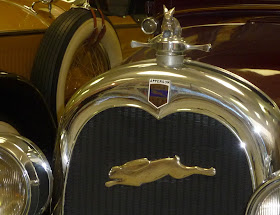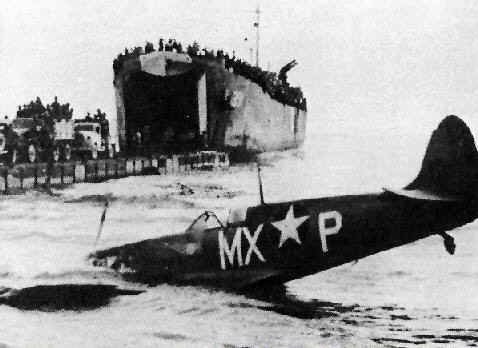Sunday, January 31, 2016
The Canadian Navy overseas
Black Tiger at Indianapolis, 1973
I think that the face on the cover pic bears more than a passing resemblance to Paul Newman, who was at his auto racing and acting height when this edition was published. If so, I doubt that Newman endorsed this use of his image.
"Patrick O'Connor" was the nom de plum of Irish-born Leonard Patrick O'Connor Wibberley. This particular book was first published in 1962, one of a series of young adult books about a fictional "Black Tiger" racing car. Wibberley is perhaps best known for five satirical novels about an imaginary country Grand Fenwick, particularly his 1955 book, The Mouse That Roared (which was made into a 1959 movie starring Peter Sellers).
Ratch-O-Matic screwdriver
An interesting idea. The handle is spring-loaded and, as you shove it in against the portion holding the blade, annular teeth on both parts engage to permit you to spin the fastener.
The only information I can find is that the "Ratch-O-Matic" Canadian trademark was filed by the Harlaken Specialty Company, Ltd. of Ingersoll, Ontario in 1974. The company was founded by Harley Wilmur Douglas and Gordon Edward. The trademark was inactivated in 1990.
Harlaken also registered "Tract-o-Lite" in the mid-1970's,
although that name had been used previously in the U.S. for much longer
for lamps on early Ford tractors, particularly those made by the C.H. Hall Lamp Company of Detroit.
Saturday, January 30, 2016
American tank in action, 1942
We used to make things in this country. #227: Newell Manufacturing Company Limited, Prescott, Ontario
Above, a bottle opener. Below, several Newell hacksaws:
In March 2000, the Newell-Rubbermaid shut down the original plant in Prescott, putting more than 100 people out of work. The jobs were transferred to the U.S. facilities. In 2002 Newell's presence in Prescott ended completely when it closed down the marketing office of Newell Window Finishings.
Friday, January 29, 2016
Sawmills for the CPR
Chain repair pliers
These are stamped “J.N.M. & Co., Pat July 26-10 Re Aug 2-15, on one side, and “Necessity” on the other.
They are J.N. MacDonald chain repair pliers. In 1910, paved roads were few and far between, and tire chains were essential to navigate the much more common mud roads (see 1917 ad below). The inventor was listed as residing in Hartford, Connecticut, and the 1910 letters patent state that “This invention relates to an improved implement for repairing chains, such as the tire chains of automobiles and the like…and by the use of which links may be expanded and again closed as may be required.”
A later patent was assigned to James M. MacDonald of nearby Wethersfield, suggesting the possibility of a family-owned tool business.
 |
| A.L. Dyke. Dyke's Automobile and Gasoline Engine Encyclopedia. Nineteenth Edition. Chicago: The Goodheart-Willcox Company, Inc., 1941. |
Thursday, January 28, 2016
Vanished tool makers: Duratech
I recently uncovered this Duratech metric wrench. I can't find any information about the brand on the web. I expect it's Chinese made.
Wednesday, January 27, 2016
DKW Mascot, 1920's
KABI oilcans, Denmark
KABI was founded in 1937 and its factory is located north of Copenhagen. Oilcans were the company's first product, and remain today in the product line.
Naturally, the paint on my can had to bubble and discolour just under the decal. I've no idea what "Houby" refers to.
Tuesday, January 26, 2016
1970s Art of the motorcycle
Building a custom motorcycle requires many skills including a fine sense of proportion... This misshapen creation looks like a sad misuse of a Honda CB350.
We still make things in this country, Canada Crayon Co.
Although the Canada Crayon Company is still in operation in Lindsay Ontario, I doubt if any of their products come in nice finger-jointed wooden boxes like this anymore, This one with sliding wooden lid contained 144 pieces of chalk.
The company is now named Crayola after the crayons, the most popular product from the company, first introduced by the American parent company in 1903.
The company is now named Crayola after the crayons, the most popular product from the company, first introduced by the American parent company in 1903.
Restore the voice with Evans' Pastilles, 1912
Scanned from an old newspaper I found in a thrift store.
The National Drug and Chemical Company was a wholesale outlet founded in 1905 by Canadian David Wesley Bole (February 15, 1856 – June 24, 1933). Born and educated as a pharmacist in Lambton County Ontario (which was then known as Canada West), he had previously founded the Bole Drug Company in Winnipeg in 1898. Bole Street in Winnipeg is named in his honour. The firm prospered and was bought by the McKesson Corporation of San Francisco in 1991.
I've no idea about the "Liverpool Throat Hospital." Mme. Gadski probably refers to Johanna Gadski (1870 – 1932), a celebrated German diva of the era.
Archer Microflame torch
This heating technology has now slipped into history. Until it expired in 2007, "Archer" was a trademark of the Tandy Corporation, owners of Radio Shack, which filed for bankruptcy in February 2015. It has since been saved by Standard General, a hedge fund, which plans to operate some of the stores in partnership with Sprint. While only about 1740 of Radio Shack's more than 4000 stores will remain open, the deal will nevertheless preserve as many as 7500 jobs.
Monday, January 25, 2016
Vanished tool makers: Cintride Ltd., Sheffield, England
I came across this curious carbide-tipped drill bit recently. It's designed for cutting class and ceramic tile. It is marked "Cintride England." I imagine that this name was suggested by sintered carbide.
According to one forum:
"The Cintride works on the A6 just south of Bakewell closed around 1999-2000 I think. I visited on business in 1999 when they were still manufacturing drill bits there, saying they were much better than nasty foreign ones. It was obvious the company was on its last legs."
Same old story.
 |
| Grace's Guide |
Sunday, January 24, 2016
Steam barge Union
 |
| Fred Rogers, More shipwrecks of British Columbia, Douglas and MacIntyre 1992 |
Yamaha 250 Exciter, before and after
Custom version seen along College St. Toronto though I have seen it on the road more than 60 miles from Toronto. She (the owner) is tougher than I am!















































